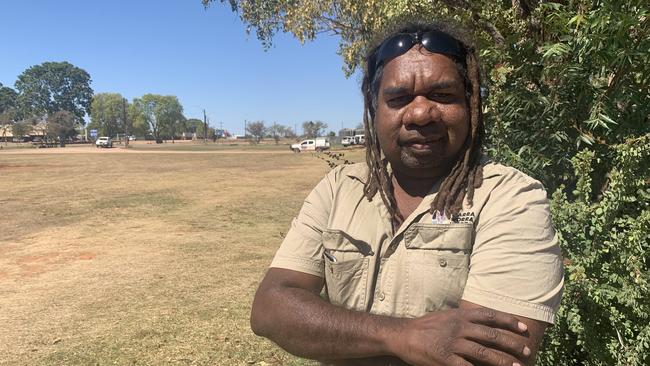Fitzroy Crossing bridge rebuild sparks hopes on jobs and crime
Further infrastructure investments across the Kimberley could flow off the back of the Fitzroy Crossing bridge rebuild

The record-breaking floods that swept through Fitzroy Crossing this year and cut the Kimberley in two were a devastating blow to a community that had already been battling chronic levels of crime and social dysfunction. But there are early signs the rebuild efforts under way in the town have had a surprising side-effect.
Fitzroy Crossing locals say they have seen a noticeable decrease in crime in the town since the flood, as well as a sharp uplift in employment levels among a local population that has historically struggled to find work.
A massive effort to build a new bridge across the Fitzroy River to replace the one destroyed during the floods has created numerous job opportunities for the local Indigenous population, with several new businesses sprouting.
Fitzroy Crossing local Keith Andrews lost his home and almost everything he owned in the floods. All he could save were a couple of T-shirts and a few pairs of shorts.
Since then, however, he has started his own business, Countrymen Rubbish, initially winning contracts to help with the immediate post-flood clean-up that have now turned into a number of ongoing jobs with local businesses and organisations.
He says his is just one of several similar stories in the town, with the increased employment helping in turn to drive what he says is a “big improvement” in the town’s crime and social issues.
“Getting a pay cheque and having your own belief that you can work, and that at the end of the day you can put food on the table for yourself and your family, I see that as really rewarding for people like me who have grown up in this community,” he told The Weekend Australian.
“Other locals, even the younger ones, are getting that mindset that they’ve got to go to work because they are seeing that there’s employment opportunities now.”
Damien Parriman is the chief executive of KRED Enterprises, a Broome-based Indigenous organisation that provides advice to traditional owner groups in the region. He told The Weekend Australian he had heard early indications there had been a dip in crime and social issues in Fitzroy Crossing, going against the broader trend of the Kimberley.
He wants to keep a close eye on whether the apparent trend is real and sustainable.
“If we could demonstrate that economic investment the right way is having a positive impact on these social issues, then I think we could see a shift in the way in which government funds Aboriginal programs,” he said.
“The native title groups we work with have a list a mile long of all the things that they want to see happen on country and if we can start changing the way people are thinking about investment, there’s an opportunity to make those things happen.”
The investment under way in Fitzroy Crossing, he says, is like nothing the town has ever seen.
The single biggest investment in Fitzroy Crossing is the bridge project. When the old bridge went down, it cut off the only route across the region and caused major disruption to communities and businesses.
The new, stronger pylons will be in place before the upcoming wet season, during which time the new bridge will start to slide into place. Students from the local high school have painted a mural on the structure that will help guide the bridge across the river, with the aim of opening to traffic by mid-next year.
The wet season will wash away the temporary low level crossing now in place, leaving the town dependent on barges and helicopters to cross the river. Cattle stations and remote communities are already stocking up in anticipation of months of isolation.
While there is an urgency to the rebuild given how critical it is to the region, the state government is starting to think about what can be done to keep those job opportunities going beyond it.
During a visit to Fitzroy Crossing to inspect the progress of the bridge build, WA Treasurer and Transport Minister Rita Saffioti told The Weekend Australian 30 per cent of the workforce on the recovery project was Indigenous. Some $2m had already been spent with Aboriginal businesses.
The involvement of locals, she said, had built a stronger sense of pride and ownership in the town and the government is looking at several other projects to keep jobs going in the region into the longer term. “This is all about training people for the future,” she said.








To join the conversation, please log in. Don't have an account? Register
Join the conversation, you are commenting as Logout